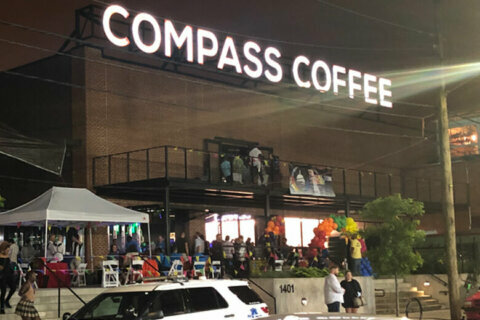If you’re a Marylander who regularly commutes on D.C. region roadways, a new study suggests that traffic congestion and highway bottlenecks could be costing you thousands of dollars per year.
A report published this week by TRIP, a D.C.-based nonprofit that analyzes surface transportation data, found that the average driver loses 99 hours and 39 gallons of fuel annually to delays in Maryland’s D.C. suburbs. That amounts to $2,465 per driver every year.
Baltimore-area drivers fared somewhat better, losing an average of 59 hours and 22 gallons to congestion per year, leading to an annual cost of $1,371.
In total, TRIP estimates that snarled roadways cost Marylanders a staggering $5.8 billion in 2022 — a figure its researchers warned could negatively impact economic opportunity and job accessibility as the area rebounds from a pandemic slump.
A 2019 study from the University of Minnesota’s Center for Transportation Studies estimated that of the 2.4 million jobs accessible at the time within a one-hour drive of the D.C. metropolitan area, only around a quarter could be reached within a half-hour drive, accounting for typical traffic.
“The growth and development of a state or region hinges on efficient and safe access to employment, customers, commerce, recreation, education, and healthcare via multiple transportation modes,” TRIP said in its report. “As Maryland emerges from the COVID-19 pandemic, the quality of life in the Old Line State, and the pace of the state’s economic growth, will be closely tied to the condition, efficiency, safety, and resiliency of its transportation system.”

It probably won’t surprise drivers to learn that portions of the Capital Beltway and Interstate 270 topped the report’s list of worst offenders for highway congestion. A 4-mile stretch of the I-495/Outer Loop from the Prince George’s-Montgomery county line west to Md. Route 97 took first place for the morning commute, while an adjacent stretch of the Inner Loop from the I-270 spur east to Route 97 earned the distinction for the afternoon drive.
“It’s death, taxes, and congestion on the Beltway in Silver Spring. Drivers can count on Beltway congestion between Bethesda and Silver Spring most days of the week, year-round,” WTOP traffic reporter Dave Dildine said, reacting to the report’s findings.
“As far as Outer Loop delays in the morning from Prince George’s County passing Georgia Avenue, that can be attributed to poor design,” WTOP’s Mary de Pompa added. “The lanes are mostly straight and free-flowing until they meet the Mormon temple and begin to zig and zag, which causes abrupt speed drops and rippling delays.”

The study also ranked Maryland’s most significant highway bottlenecks, which TRIP defined as a portion of roadway where drivers regularly see large reductions in travel speeds. The worst in that category? The northbound Baltimore-Washington Parkway at Powder Mill Road.
“It isn’t designed to handle the volume of traffic it receives. The merges are shorter, and many of the interchanges lead to weaving and slowing,” Dildine said. “Since it’s congested for many hours of the day, there is less margin for error and a high crash rate. With less shoulder space, backups at incidents are a sad reality for what’s supposed to be a scenic byway.”
In a Zoom call with reporters, TRIP’s Rocky Moretti encouraged the state to invest heavily in programs aimed at improving roadway reliability. Moretti noted promising strides have already been made, with the federal Infrastructure Investment and Jobs Act expected to provide $4.6 billion in road, highway, and bridge funding.
The Maryland Department of Transportation, Moretti added, has also been making efforts to improve its incident response system and traffic signals, as well as bicycle and pedestrian facilities.








